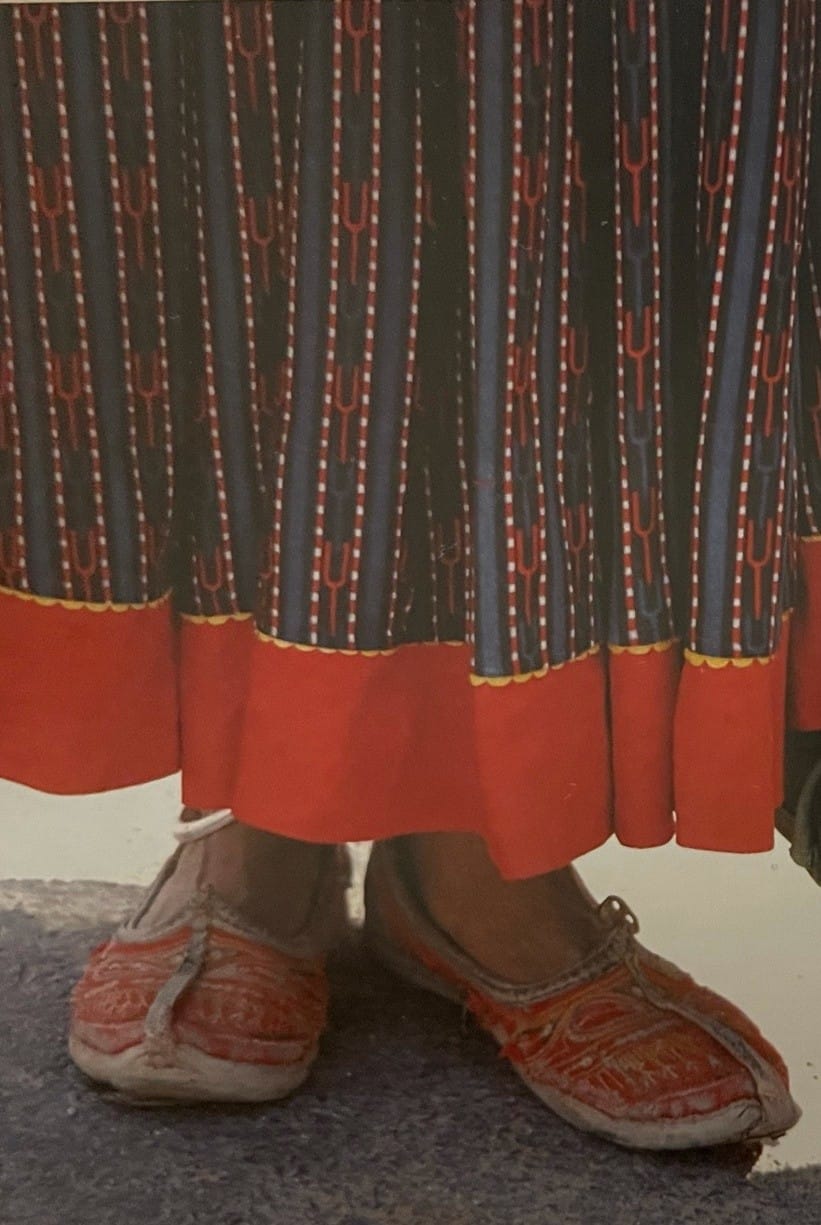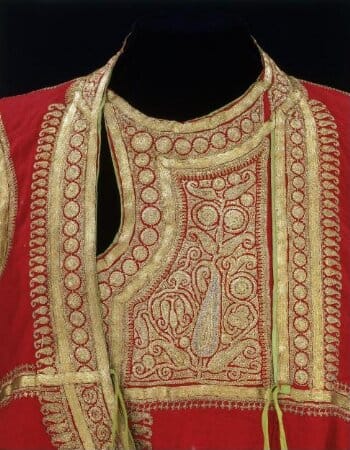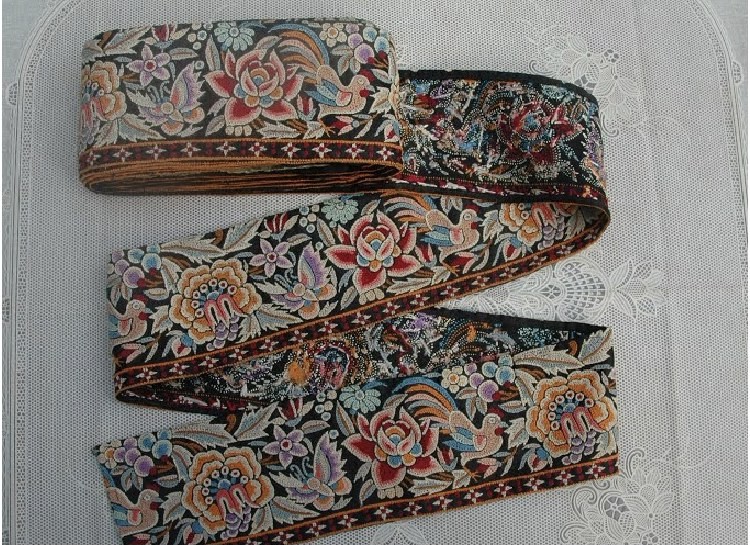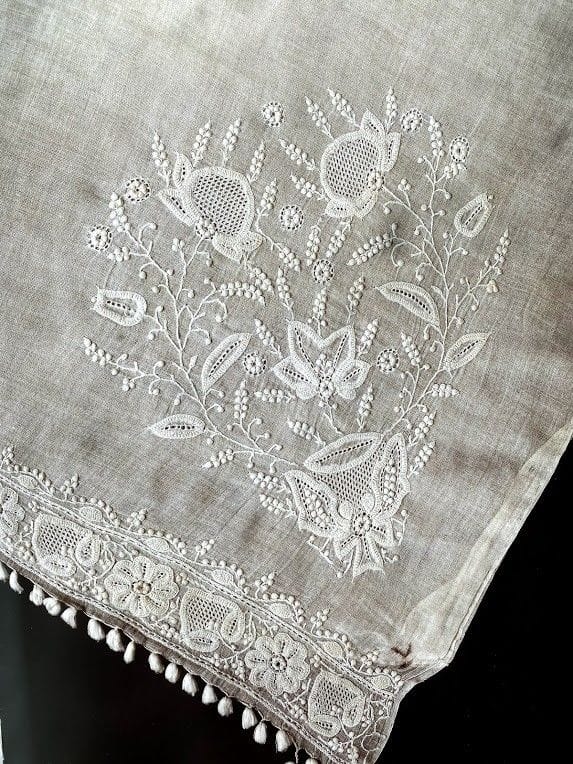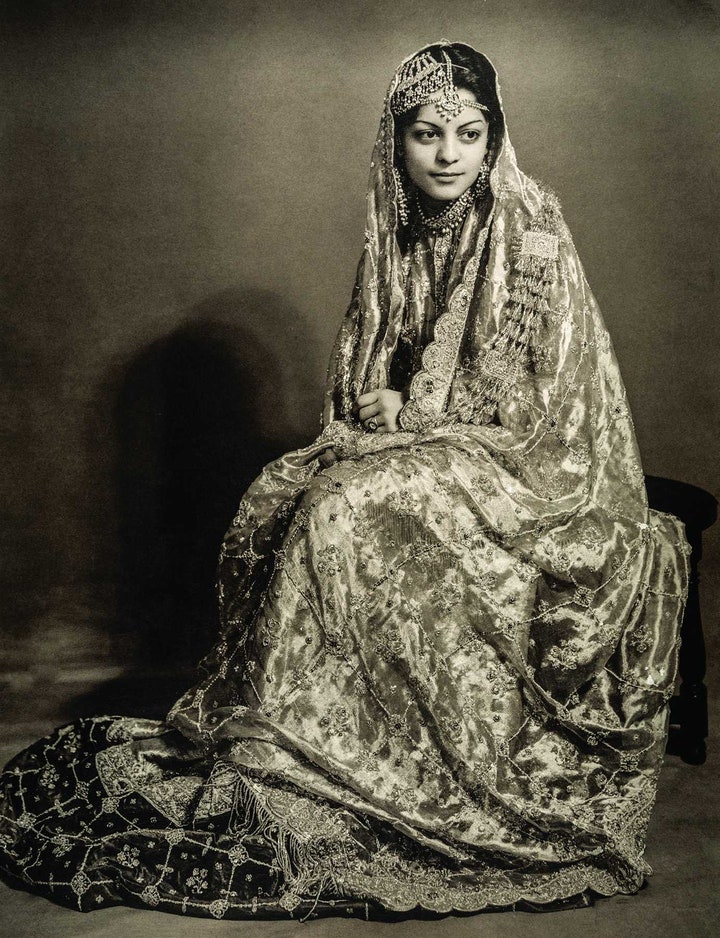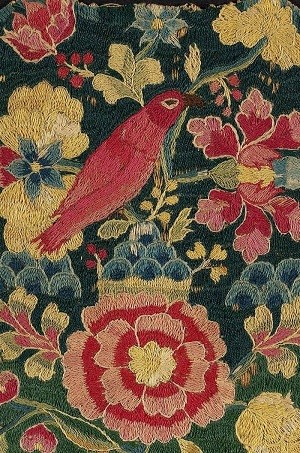12 May The Jama and Angrakha, the Silhouettes of Indian Apparel
[vc_row css_animation="" row_type="row" use_row_as_full_screen_section="no" type="full_width" angled_section="no" text_align="left" background_image_as_pattern="without_pattern" css=".vc_custom_1620800676193{padding-right: 15px !important;}" z_index=""][vc_column offset="vc_col-xs-12"][vc_column_text][caption id="attachment_4052" align="alignleft" width="260"]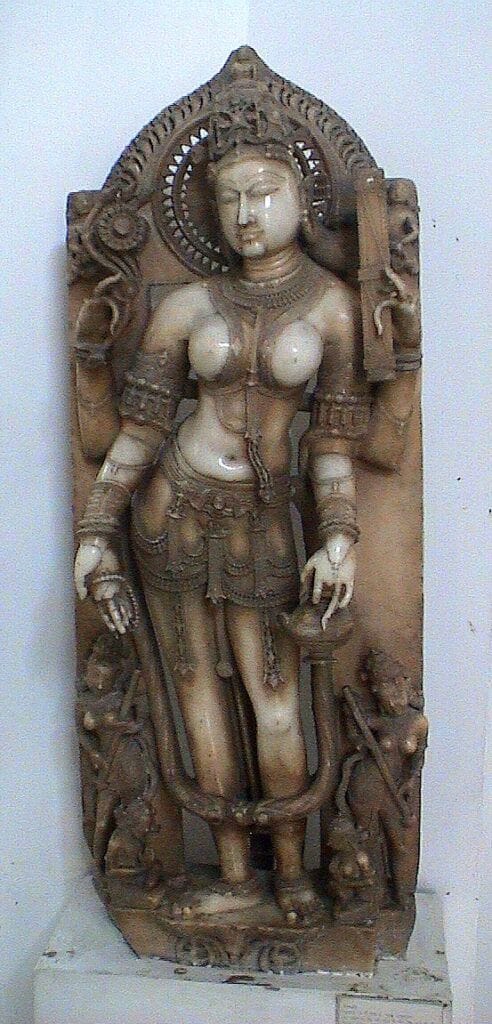 Statue of Saraswati at the National Museum Delhi. Note her apparel.[/caption]Silhouettes of Indian Apparel : India is perhaps unique in its history of wearing unstitched clothing from pre-Vedic times, draped on the body in stylized ways. Interestingly, in Vedic India, the body was considered an integral part of a human personality. Therefore there was no stigma attached to body parts being on display. As a culture, too, India has traditionally believed in the fluidity of form, matching well with draped garments.
Statue of Saraswati at the National Museum Delhi. Note her apparel.[/caption]Silhouettes of Indian Apparel : India is perhaps unique in its history of wearing unstitched clothing from pre-Vedic times, draped on the body in stylized ways. Interestingly, in Vedic India, the body was considered an integral part of a human personality. Therefore there was no stigma attached to body parts being on display. As a culture, too, India has traditionally believed in the fluidity of form, matching well with draped garments. 02 May Lyrical Expression of Nature on Fabric – Gara Embroidery
[vc_row css_animation="" row_type="row" use_row_as_full_screen_section="no" type="full_width" angled_section="no" text_align="left" background_image_as_pattern="without_pattern" css=".vc_custom_1619985119265{padding-right: 15px !important;}" z_index=""][vc_column offset="vc_col-xs-12" css=".vc_custom_1619981845491{padding-right: 15px !important;}"][vc_column_text]Gara Embroidery A study of textile or craft form becomes doubly rewarding when it amalgamates history and culture, not just from one geography but across nations and histories. Nothing exemplifies this maxim more than the Parsi Gara. Its intricately embroidered yards of the fabric brings together Persia, Europe, India, and China.29 Apr Gota Work or Lappe Ka Kaam – Gold Ribbon Embroidery from India
Posted at 16:13h in Artisan, Culture, DESIGN, Embroidery Series, History, Sustainability, Technique by Nidhi Garg 0 Comments
[vc_row css_animation="" row_type="row" use_row_as_full_screen_section="no" type="full_width" angled_section="no" text_align="left" background_image_as_pattern="without_pattern" css=".vc_custom_1619725349713{padding-right: 15px !important;}" z_index=""][vc_column offset="vc_col-xs-12"][vc_column_text]Gota Work or Lappe Ka KaamThis past year allowed us to work with many embroidery techniques from India, which are traditionally practised as embroideries of gold. A few days ago, when we wrote about one such Embroidery of Gold- Zardozi Embroidery, we received a great response. Therefore we feel encouraged to share more on Indian embroidery techniques from the genre of 'gold.' One such technique is Gota Work or Lappe Ka Kaam.
23 Apr White on White Embroidery of India- Chikankari Embroidery
Posted at 16:24h in Art, Artisan, Embroidery Series, History, Sustainability, Technique by Mira Gupta 0 Comments
[vc_row css_animation="" row_type="row" use_row_as_full_screen_section="no" type="full_width" angled_section="no" text_align="left" background_image_as_pattern="without_pattern" css=".vc_custom_1619207173048{padding-right: 15px !important;}" z_index=""][vc_column offset="vc_col-xs-12"][vc_column_text]Chikankari Embroidery from India - As a child growing up in Lucknow in the 1960s, I recall being dragged along to the stores when my mother and aunts shopped. Much to my boredom. Except when we went to the chikankari shops. Even as a child, I found the gossamer tenderness and transparency of the craft fascinating, and I'm not alone in this. In 1903, George Watt described it as "the most artistic and delicate form of the indigenous needlework of India." Laila Tyabji compares it to a dragonfly wing. 05 Apr Kantha Embroidery born out of Recycling and Upcycling Traditions
Posted at 15:41h in Artisan, Culture, DESIGN, Embroidery Series, History, Technique by Mira Gupta 0 Comments
[vc_row css_animation="" row_type="row" use_row_as_full_screen_section="no" type="full_width" angled_section="no" text_align="left" background_image_as_pattern="without_pattern" css=".vc_custom_1618453133623{padding-right: 15px !important;}" z_index=""][vc_column offset="vc_col-xs-12"][vc_column_text]Kantha Embroidery: We speak so much nowadays of recycling and upcycling as a means of repairing what we have done to the environment and our ecology through thoughtless consumption. But in several cultures, and particularly Japan and India, upcycling has existed historically. [/vc_column_text][vc_empty_space][/vc_column][/vc_row][vc_row css_animation="" row_type="row" use_row_as_full_screen_section="no" type="full_width" angled_section="no" text_align="left" background_image_as_pattern="without_pattern" css=".vc_custom_1618453133623{padding-right: 15px !important;}" z_index=""][vc_column offset="vc_col-xs-12"][vc_column_text][caption id="attachment_3869" align="alignleft" width="300"]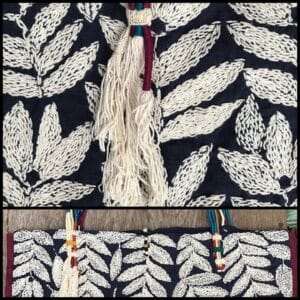 Sashiko from Japan. So similar to Kantha. Picture Rit Maes[/caption]Japan, of course, has her Sashiko and Boro. And India has Kantha. I recall when my son was born, our Bengali help embroidered his first nappies using soft used cloth and beautiful Kantha, something I still treasure.
Sashiko from Japan. So similar to Kantha. Picture Rit Maes[/caption]Japan, of course, has her Sashiko and Boro. And India has Kantha. I recall when my son was born, our Bengali help embroidered his first nappies using soft used cloth and beautiful Kantha, something I still treasure. 02 Apr The Story of Cotton in America and How it is linked to Cotton Production India
Posted at 11:31h in Cotton Series, Earth Democracy, Farming, History, Sustainability by Nidhi Garg 0 Comments
[vc_row css_animation="" row_type="row" use_row_as_full_screen_section="no" type="full_width" angled_section="no" text_align="left" background_image_as_pattern="without_pattern" css=".vc_custom_1617338351795{padding-right: 15px !important;}" z_index=""][vc_column offset="vc_col-xs-12"][vc_column_text]Cotton was the primary commodity of the first days of an Industrial production system that changed the world.With the arrival of the British East India Company in India and their overlordship on the cotton manufacturing (among other things) on the Indian Subcontinent, the ever so romantic and prosperous Story of cotton and cotton farmers that I discussed in my earlier post came to an erratic end. SEED SELECTION AND GROUND PREPARATION FROM HISTORY OF SUSTAINABLE COTTON
READ MORE ON OUR COTTON SERIESI will talk more about the India story at the end of this article. Let us first look at the Story of cotton in America.28 Mar Phulkari Embroidery of the Women of Punjab
Posted at 15:01h in Artisan, Culture, DESIGN, Embroidery Series, History, Sustainability, Technique by Mira Gupta 1 Comment
[vc_row css_animation="" row_type="row" use_row_as_full_screen_section="no" type="full_width" angled_section="no" text_align="left" background_image_as_pattern="without_pattern" css=".vc_custom_1616956674552{padding-right: 15px !important;}" z_index=""][vc_column offset="vc_col-xs-12"][vc_column_text]If there is any embroidery that is solely in the realm of women, it is phulkari, and that too the women of Punjab. Translating to 'flower work,' it is vital in the history and culture of its state of origin, steeped in its history, its customs, and rites of passage ceremonies. More than any other embroidery of India, it is significant- less for commercial reasons and more for the insight it offers into women's lives historically. 24 Mar Embroidery of Gold- Zardozi Embroidery
Posted at 00:27h in Art, Artisan, Culture, Embroidery Series, History, Technique by Mira Gupta 4 Comments
[vc_row css_animation="" row_type="row" use_row_as_full_screen_section="no" type="full_width" angled_section="no" text_align="left" background_image_as_pattern="without_pattern" css=".vc_custom_1616300712552{padding-right: 15px !important;}" z_index=""][vc_column offset="vc_col-xs-12"][vc_column_text]Zardozi Embroidery: There is something about embroidery that has held the world in thrall in all of recorded history. Is it the human urge to beautify and improve? Is it a stress buster? Whatever the reasons, India probably stands at the forefront of the world in terms of both the variety and the complexity of its embroidery traditions. Many of the embroideries found on garments on the international catwalks are developed in India, though this may not be known or acknowledged. 03 Mar Kashidakari – The Gorgeous Embroideries of Kashmir
Posted at 17:30h in Artisan, Culture, DESIGN, Embroidery Series, History, Technique by Nidhi Garg 4 Comments
[vc_row css_animation="" row_type="row" use_row_as_full_screen_section="no" type="full_width" angled_section="no" text_align="left" background_image_as_pattern="without_pattern" css=".vc_custom_1614810953051{padding-right: 15px !important;}" z_index=""][vc_column offset="vc_col-xs-12"][vc_column_text][caption id="attachment_3700" align="alignleft" width="350"] Kashmir Image from traveltriangle.com[/caption]Embroideries of Kashmir: A couple of weeks back, I shared a breathtaking video made by the Google Arts & Culture Institute on the Sozni Embroidery from Kashmir. The video gathered a lot of love and likes on Facebook and Instagram.The valley of Kashmir with its beautiful flora and fauna is resplendent with nature. Therefore the embroideries or textile designs from Kashmir have always been largely inspired by the floral beauty of the valley.
Kashmir Image from traveltriangle.com[/caption]Embroideries of Kashmir: A couple of weeks back, I shared a breathtaking video made by the Google Arts & Culture Institute on the Sozni Embroidery from Kashmir. The video gathered a lot of love and likes on Facebook and Instagram.The valley of Kashmir with its beautiful flora and fauna is resplendent with nature. Therefore the embroideries or textile designs from Kashmir have always been largely inspired by the floral beauty of the valley.

